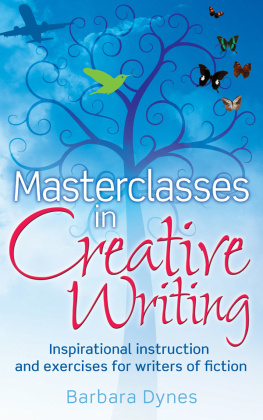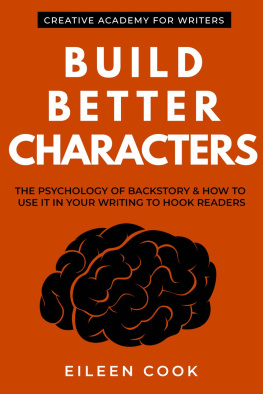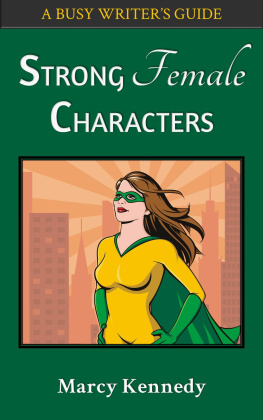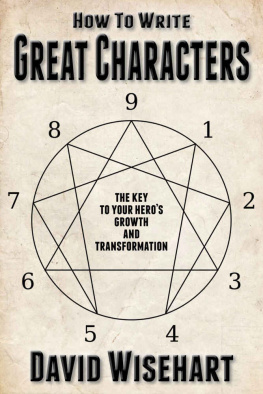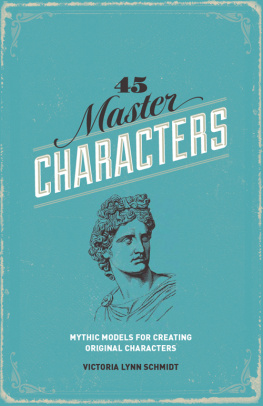WRITINGCHARACTERS WHOLL KEEP READERS CAPTIVATED
NAIL YOURNOVEL
By RozMorris
Published byRed Season
Copyright 2013Roz Morris
Smashwordsedition ISBN 9781301481460
Connect withRoz Morris at Twitter @Roz_Morris
website Nail Your Novel
This ebook islicensed for your personal enjoyment only. This ebook may not bere-sold or given away to other people. If you would like to sharethis book with another person, please purchase an additional copyfor each recipient. If youre reading this book and did notpurchase it, or it was not purchased for your use only, pleasereturn to the store and purchase your own copy. Thank you forrespecting the hard work of this author.
This book iswholly the intellectual property of Roz Morris. It is completelyand utterly her copyright. No part of it may be copied orreproduced without the prior written permission of the author, RozMorris. All rights reserved.
Contents
Introduction
The mainreason readers keep turning the pages of a novel is to find outwhat happens next. But what happens to whom? Its the characterswho make us care.
Compellingnovels are about people were drawn to read about. People whodeserve to be at the centre of a story. People who keep uscaptivated even when they do questionable things.
In 20 years ofwriting and coaching, Ive assessed a lot of novels in progress.Ive seen characters who demanded attention from first glance, andstayed alive long after the final page. Equally Ive seen writersgo badly wrong, but with excellent intentions. Their plot makes thecharacters into unthinking puppets. Their iconic everyman is abland nobody. Their troubled protagonist is an annoying whiner.Their mysterious stranger is a nonentity. Their tender lovers aresoppy and cloying. All the characters seem roughly the same exceptfor their names. And sex scenes... well lets not scare everyonejust yet.
Ive seennovels where I cant tell whos who. The fictional people are welldrawn but they are all clones, with perhaps a variation in haircolour, job description or gender.
These problemscan all be fixed and sometimes the fix is a question of nuancerather than wholescale nuke.
This book isstructured as a series of tutorials that tackle these fundamentalproblems. It is an in-depth examination of what goes wrong, why andwhat to do instead. Section by section, it will build yourawareness of how characters drive fiction, how readers respond tothem and what works for your kind of novel whether thatsbreathless thrillers or literary character studies. Whats more,your plot will flow more naturally because youll create people whomake you want to tell stories. The sections will help youtroubleshoot a manuscript in progress, and exercises at the endwill guide you to populate a new book from scratch.
Of course, youmight want to disregard conventions and what is accepted. Anawkward effect Im discussing may be exactly what you want thereader to feel. Nothing here is a prohibition. Art thrives onrule-breakers and mavericks. This book will teach you what worksand how.
Dip in andread one piece a day. Or dig in for an intensive journey ofdiscovery.
Who am I?
Youll haveseen my novels in the bestseller charts, but you wont have seen myname because I was a ghostwriter, hired to write books as otherpeople. Im now coming out of the shadows with my own fiction. Aswell as writing, I have an extensive background in publishing andediting. Ive appraised manuscripts for a London literaryconsultancy and also as a freelance, and my clients include winnersof prestigious national awards. From my work with authors I wrotethe first book in this series, Nail Your Novel: Why WritersAbandon Books and How You Can Draft, Fix and Finish WithConfidence. Others are in the works.
1 Most commonly repeatedadvice: show not tell
The advice Iwrite most frequently in manuscript appraisals, even to seasonedauthors, is: dont tell us; show us. Showing, rather thantelling, is a basic tool for bringing a story to life, especiallythe characters. Whole books are devoted to its many forms and uses,and Ill be mentioning it a lot. So for now, heres a simpleexplanation.
This istelling:
Otto isfun.
This is astatement made by the author. Contrast with (from ChristopherIsherwoods Goodbye to Berlin):
Otto has aface like a very ripe peach. He has small sparkling eyes, full ofnaughtiness.
This is adescription that lets, you, the reader, decide that Otto is fun. Itis persuasive and memorable. (By the way, theres nothing wrongwith writing Otto is fun and then following it with his peachlikecountenance and twinkly peepers. For some narratives that will runmore smoothly than the description on its own. But in isolation,the sentence Otto is fun does not bring him to life.)
Heres anotherexample of telling:
David wasmultitalented.
Compare itwith:
David had amasters degree in chemical engineering, so he seemed an unusualchoice as editor of a prestigious literary journal. Nevertheless hehad doubled its circulation in six months. He was a crack shot witha pistol and every year challenged himself to learn to sing theprincipal tenor role of an entire opera.
When I readthis, Im convinced that David is multitalented.
Telling isntforbidden, of course. It has distinct uses, depending on theemphasis you want. But when a writer tells, they have made thejudgement for the reader. When a writer shows, they offer theevidence and let the reader decide that the character is fun,talented, beautiful, mean, cruel, generous or troubled. The readerowns the judgement and remembers it because they made itthemselves.
Which isexactly how we form conclusions about flesh-and-blood people.
Here are twotips to help you show, not tell.
Remind yourself to switchto showing
Showinginstead of telling is a habit you have to develop. And evenseasoned writers need to be reminded.
Why? Becauseshowing takes mental sweat. It requires the writer to live thescene alongside the characters. Telling is much less demanding and incredibly easy to do by default.
It doesnthelp that much of the preparation work we do on a novel is factualsummaries. If we sketch out characters beforehand, we usually writea string of facts or intentions Bill doesnt like snakes,Steve is in love with Lucy, Tiffany resents the White Witch.Small wonder that when we write the text, we continue in tellingmode. It helps to make sure our notes include shown examplesinstead of told ones, but we need to make a conscious switch tothis more vivid state of immersion.
Your outlineand notes can tell; but when you write the text, its time toshow.
Resist the urge to steerthe reader
Writers alsotell instead of show because they worry we wont see characters theway they intend.
Heres anexample from a scene where an author wanted us to feel the strainof characters at loggerheads on a family holiday:
Maggie couldfeel the tension between her brother and his wife. She felt sorryfor her brother because his wife seemed so difficult and stuck inher ways.
These lineswould be fine if supported by other observations. Otherwise,theyre not enough. They are the judgement but the reader wantsthe evidence. How did this tension look? Was there a pricklysilence at the breakfast table? Were the couple bickering about thebest way to pack the deckchairs into the car and taking no noticewhen Maggie offered suggestions?
A scene likethis is pressing the reader to agree with the writers view of thecharacters. The writer gives only conclusions difficult,tense, stuck in her ways. This can make the reader feelhectored, as if the author is nagging them to agree.
Indeed, thecharacters in this excerpt hardly seem real. The lack of specificdetail makes them a standard-issue dysfunctional family. But ifwed witnessed a petty argument about deckchairs, wed be agreeingthe pair were unreasonable and stubborn but making up our ownmind.



